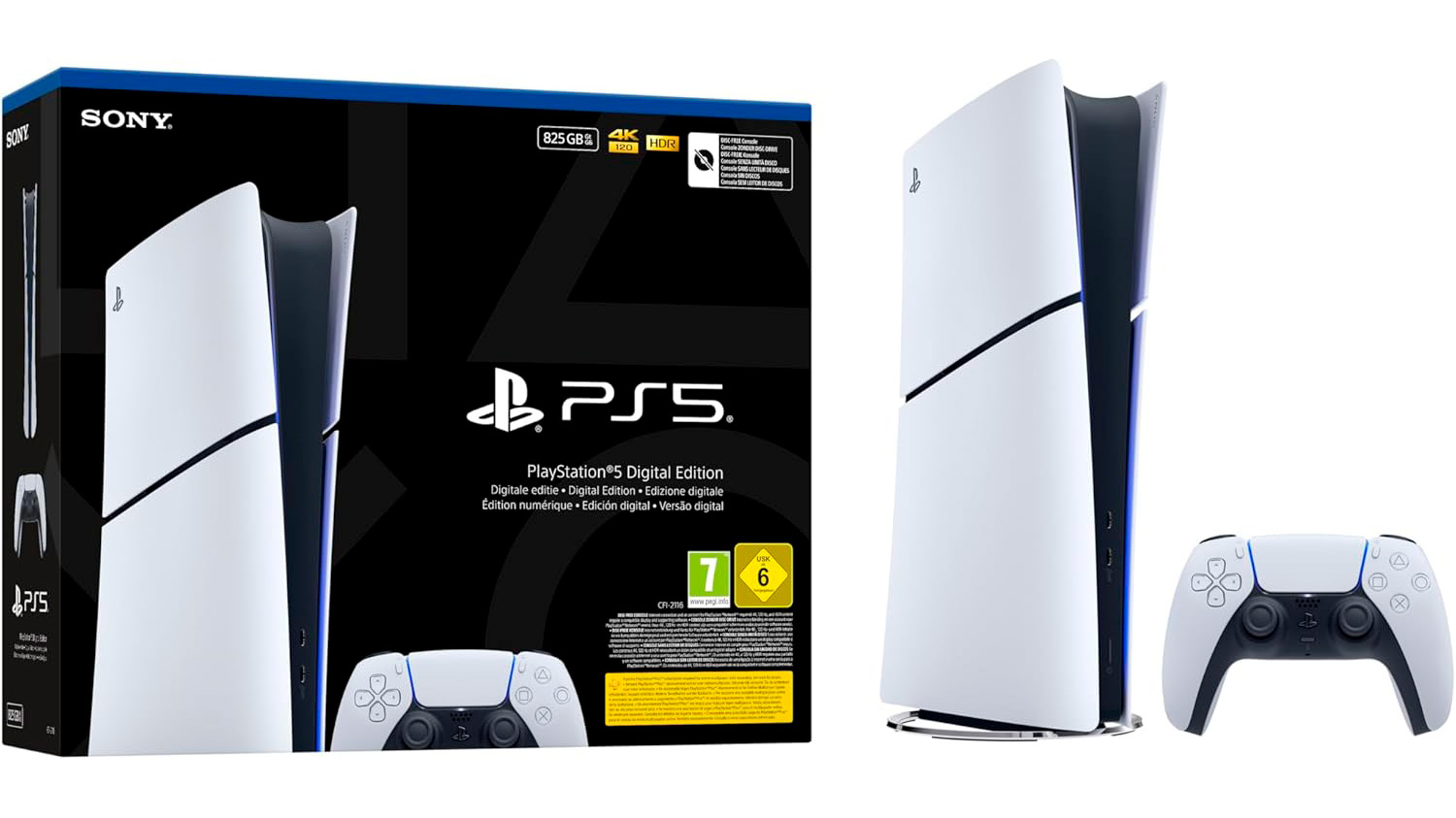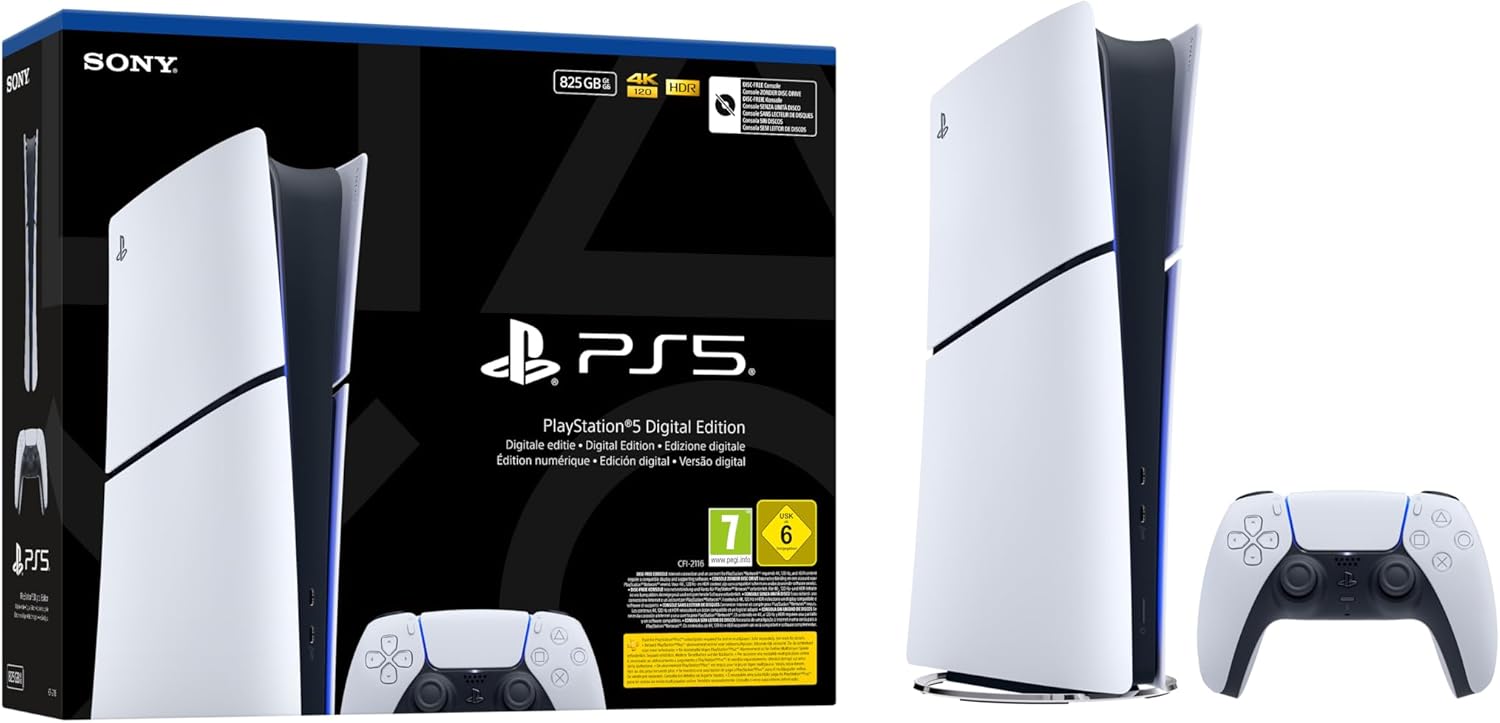PlayStation 5 Digital Edition with 1TB SSD downgraded to 825GB listed at the same price — CFI-2116 revision emerges overseas on Amazon

The rumors (via billbil-kun) regarding Sony's revision of the PlayStation 5 Digital Edition have been confirmed through various overseas Amazon listings. Although the new CFI-2116 revision maintains the original pricing, Sony has decreased the internal storage from 1TB to 825GB, representing a 17.5% reduction in capacity. This change further emphasizes the importance for owners to upgrade their consoles with one of the best PS5 SSDs.
The PlayStation 5 has been on the market for nearly five years, during which time the console has undergone multiple hardware revisions. These modifications have varied from minor optimizations, such as improvements in heatsink design, to substantial hardware alterations, including a die shrink, culminating in the transition to the PlayStation 5 Slim models. Consequently, the most recent CFI-2116 revision feels like a regression.
The original PlayStation 5, colloquially referred to now as the PlayStation 5 Fat, was equipped with 825GB of internal storage, of which approximately 650GB was accessible to the user, depending on system updates and other variables. The shift to the PlayStation 5 Slim introduced numerous enhancements, including an increase to 1TB of storage, providing the user with approximately 850GB of available space (subject to similar factors).
The CFI-2116 revision, also known as "Chassis E," marks the return of the 825GB SSD, which Sony advertises on the new packaging. Consumers are losing close to 200GB, or 24%, of usable, high-speed storage with the latest revision. You could argue that 200GB isn't a lot, and that's true in a way since some AAA titles — specifically, Call of Duty: Black Ops Cold War — are pushing over 300GB of installed size. But under normal circumstances, 200GB should be enough for one or two games.


The reason Sony has downgraded the internal storage in the CFI-2116 revision is unknown. If it weren't for past leaks or the Amazon listings, we wouldn't even know about the revision, since Sony hasn't officially announced it. However, given the current market situation, it's plausible that the downgrade could be a way for Sony to optimize production costs without resorting to another price hike. Sony already increased the pricing for the different PlayStation 5 models by $50 last month, citing the "challenging economic environment."
This generation of gaming consoles is the first to experience price increases rather than decreases. Despite this, Sony has sold over 77 million units as of May 2025, so the company is eager to keep up the momentum. Instead of raising prices again, Sony may have decided that reducing internal storage was a better way to keep prices stable.
Sony silently released the revised PlayStation 5 Digital Edition in Europe on Sept. 13. The console has already surfaced on Amazon Spain, Amazon Italy, Amazon France, and Amazon Germany. It's available for purchase at Amazon Italy and Amazon Germany for €499, which aligns with the European MSRP for the existing PlayStation 5 Digital Edition (Chassis D). Amazon Germany has set a delivery date by October 23.
Initial rumors suggest that the CFI-2116 revision may be exclusive to the European market. However, it's plausible that the revised console could make its way to the U.S. market. Fortunately, the revision only affects the PlayStation 5 Digital Edition, so the disc version is safe. Nonetheless, if you're set on buying the digital edition, it might be a good time to pull the trigger, as there's no telling if or when the 1TB SKUs will disappear from the shelves to be replaced by the 825GB variant.
Follow Tom's Hardware on Google News, or add us as a preferred source, to get our up-to-date news, analysis, and reviews in your feeds. Make sure to click the Follow button!
Get Tom's Hardware's best news and in-depth reviews, straight to your inbox.

Zhiye Liu is a news editor, memory reviewer, and SSD tester at Tom’s Hardware. Although he loves everything that’s hardware, he has a soft spot for CPUs, GPUs, and RAM.
-
Li Ken-un 825 GB is 768 GiB. NAND SSDs always have overprovisioning. But memory is also made in raw capacities of powers of two. It should be interesting to have a teardown of these new units to see how much NAND is on there.Reply -
TheyStoppedit Shrinkflation and increasing the sticker price are the exact same thing. There is literally 0.00% differenceReply -
bit_user Reply
I bought a SSD for my PS5, mainly because I didn't want to wear out the soldered-down NAND chips. You can't move everything onto the SSD, but enough that it should help save the life of your system NAND.Li Ken-un said:NAND SSDs always have overprovisioning. -
LabRat 891 Reply
Kinda what I was thinking...Li Ken-un said:825 GB is 768 GiB. NAND SSDs always have overprovisioning. But memory is also made in raw capacities of powers of two. It should be interesting to have a teardown of these new units to see how much NAND is on there.
What capacity is actually installed vs. capacity exposed?
Are they actually including less NAND or, has overprovisioning been increased drastically? -
wwenze1 Reply
Nah not anymore. So don't think too much about it.Li Ken-un said:But memory is also made in raw capacities of powers of two. -
usertests If PS6 is launching around late 2027, early 2028, I wonder how big of an SSD it can possibly get. Maybe they'll may aim for 2 TB in the base models. Games may not be increasing in size as much anymore.Reply
Cyclical pricing trends could dictate what the next 12-15 years of gaming looks like (time to PS6 launch + time to a PS7 if it's happening + additional years of games targeting the PS6). Imagine if they pulled back from 30-32 GB of (V)RAM down to 24 GB because it's expensive at the time they finalize the design and start manufacturing. -
bit_user Reply
They usually take a hit on the first hardware rev, though. I bet we'll probably have 32 Gb GDDR7 dies, at the time, which could facilitate 32 GB.usertests said:Imagine if they pulled back from 30-32 GB of (V)RAM down to 24 GB because it's expensive at the time they finalize the design and start manufacturing.
Then again, Sony is leaning pretty hard into neural rendering and probably other AI gaming tech. Therefore, they might prioritize capacity and could do like 128 GB of LPDDR6.
One thing I definitely don't expect to see is a mere 24 GB, though. -
thestryker I'm guessing this is just Sony having NAND they needed to get rid of. They changed the NAND used between launch and later revisions.Reply
As for the next generation of consoles I just hope that they do something about the idle power consumption. They should have options to prevent needing to power up all of the GDDR just for the standard media/OS type operations. -
usertests Reply
The latest MLID leak says: 160-bit GDDR7 (10 chips) at 30/40 GB. Which is the difference between using ten 24 Gb or 32 Gb GDDR7 chips.bit_user said:They usually take a hit on the first hardware rev, though. I bet we'll probably have 32 Gb GDDR7 dies, at the time, which could facilitate 32 GB.
Then again, Sony is leaning pretty hard into neural rendering and probably other AI gaming tech. Therefore, they might prioritize capacity and could do like 128 GB of LPDDR6.
Some of these consoles are including separate, cheaper DRAM, like the 2 GB DDR5 in PS5 Pro, and there would have to be a memory controller somewhere for that. So it would be interesting to see that pool expanded to handle both OS and AI. There is no indication of that yet. The "low" option of 30 GB GDDR7 could be enough for textures, a more compact LLM (e.g. 8 billion parameters), and other AI models (such as text-to-speech). -
bit_user Reply
100% agree. I bought the version with the N6 respin of the APU and it still uses like 72 W just to play some streaming video content. IIRC, it idles somewhere in the mid 50W range. If that's wrong, then it'd be on the low side of the real number! I guess I'll have to check it again.thestryker said:As for the next generation of consoles I just hope that they do something about the idle power consumption. They should have options to prevent needing to power up all of the GDDR just for the standard media/OS type operations.